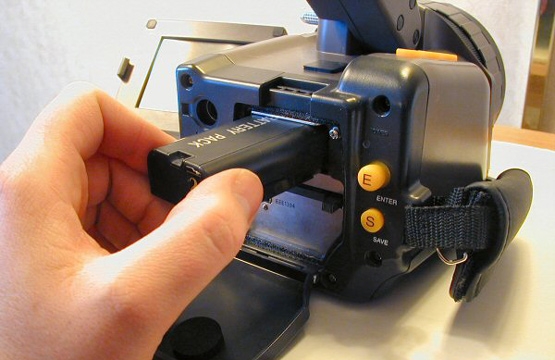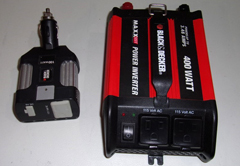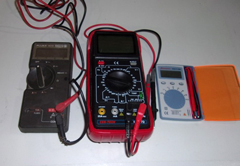

If you were asked as a thermographer to try and identify the weakest link to be found with the variety of modern (i.e., reliable & feature-rich) thermal imaging systems available in the marketplace, many of you might be resigned to just saying it is the battery. Pretty much any new camera out there does everything you need and then some. Even battery life is now typically outstanding, lasting upwards of 4+ hours for many models.
The reality, though, is that this can fluctuate somewhat depending on how much inspection time you spend in a typical day, whether or not the camera goes to “sleep” as you travel between mechanical rooms, or how bright you have your LCD display set. This is especially true if you must travel to different locations within the site or even to another site completely. Long duration timed captures can also tax your batteries capabilities, consider utilizing the AC adapter option to provide power. The charger transformer can often be used to charge and or power the camera itself. Also, as batteries age, they can lose some of their effectiveness.
Depending on the situation, you may find yourself needing to swap out batteries in the middle of a route or instead struggling to find open receptacles in your customer's facility to use your charger. This can be frustrating and time-consuming. But having a few handy items and strategies can help ensure that you stay charged up and ready. Carry extras! They don’t weigh much and can save the day. try to keep at least 50% of battery power in reserve. To be available when “special” tasks come up. I.E troubleshooting, follow-up inspections, and those ever arising “quick looks”. Your scheduled routes should not consume more than 50% of available battery power. (If you have 2 batteries the scheduled route should only take 1 battery to complete).

For less than $100 you can purchase a power inverter that plugs into your car's cigarette lighter/power port and can be used to charge your laptop, cell phone, and even IR camera batteries. Find one that has both an outlet for 110VAC plugs as well as a USB port for your phone. It is important to be aware of how much current your inverter delivers without overloading it, as well as the current draw of whatever devices you plan to charge with it. For example, know if the battery charger for the camera you use most often for inspection work is hungry enough that alone it nearly maxes out your inverter, or if you can plug your phone in at the same time. Usually, power consumption data for electronic devices can be found in the user's manual. For the sake of safety, it is wise to only use your inverter to charge devices that utilize a transformer to isolate the item being charged from the inverter output and not a direct line cord from the inverter to the device.

Another handy device is a ground plug adapter. It allows you to plug your camera's battery charger, laptop charger, and other devices into outlets that don't have a ground receptacle. They are UL approved and quite useful. However, they must be used in the manner in which they were designed in order to be safe. If you encounter an outlet that is two-pronged only and you need an adaptor to interface with your charger, you need to make sure the outlet is properly grounded. For the electrically qualified this is relatively simple. With a voltmeter, measure from the shorter of the two outlet slots (which is the hot one) to the center screw of the outlet. If you read voltage, that means your outlet is grounded on its case and your plug adapter will be safe to use on that outlet.
Also, consider having a splitter on hand for your charging needs. Many chargers draw smaller amounts of current than receptacles can safely provide, so it is possible to run out of receptacle space before running out of electrical capacity. A splitter allows multiple plugs to utilize a single outlet. As with any other electrical device, it is imperative to use it safely. When in doubt, consult your user's manual for any devices you need to charge. Do not use the splitter in conjunction with the grounding adapter however and only use a splitter that has a proper ground prong.
Taking some of these suggestions can help stop you from going back to the same location tomorrow with fresh batteries. So good luck on your next inspection, having all the power needs you have, stay safe, and remember to Think Thermally!®